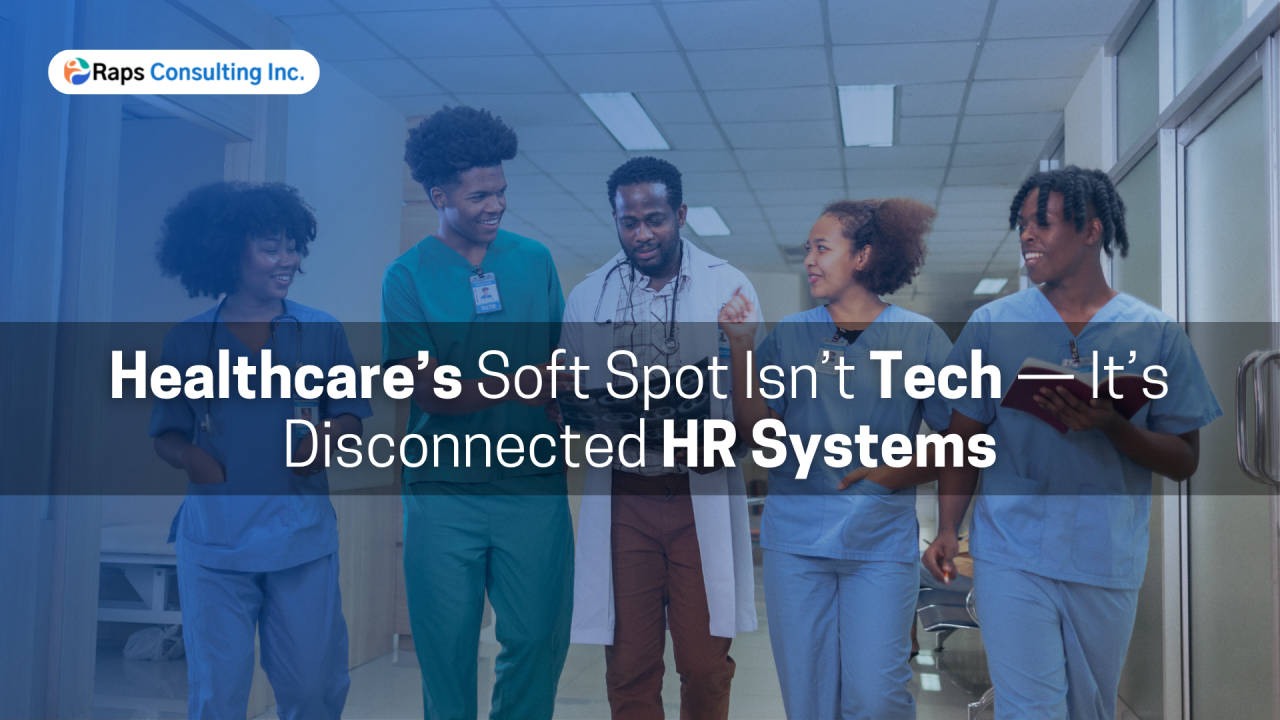When a Payroll or HR Mishap Becomes a Security Threat
Cybersecurity in healthcare continues to be a critical concern. In 2023 alone, the healthcare industry experienced a staggering 725 reported data breaches, compromising over 133 million patient records according to the HIPAA Journal. While most discussions around healthcare cybersecurity focus on software vulnerabilities, unpatched tech systems, or phishing emails, the real threat often starts much closer to home—in human resources and payroll operations.

Behind many of these breaches are seemingly mundane administrative oversights. For example:
- A payroll error generates an unauthorized payment to a terminated employee.
- A compliance document remains active long after it should have expired.
- A stale org chart means an ex-employee retains access to patient databases.
These aren’t just clerical errors—they’re silent risk amplifiers.
The Hidden Cyber Risk in Disconnected HR and Payroll Systems
Healthcare organizations operate under intense regulatory scrutiny, from HIPAA to HITECH compliance. But when employee data, payroll systems, document workflows, and access control live in isolated silos, even a single misalignment can expose sensitive data or result in costly penalties.
Disconnected systems often lead to:
- Improperly offboarded employees retaining system access.
- Inconsistent document management leading to compliance violations.
- Misaligned roles and responsibilities creating authorization loopholes.
These aren’t hypothetical scenarios—they are entry points for cybercriminals and often go unnoticed until it’s too late.
🔒 Why This Matters More in 2025
The latest data reveals just how urgent this issue is:
- 67% of healthcare cybersecurity teams are understaffed.
- 74% of organizations report difficulty filling key security roles.
- Healthcare was the most targeted sector in 2023, with 59% of ransomware attacks aimed at healthcare providers.
- The average cost of a healthcare data breach in 2023 hit a record $10.93 million per incident (IBM Cost of a Data Breach Report).
In an industry already stretched thin, an HR misstep isn’t just a process problem—it’s a full-blown security vulnerability.
Why Integrated HR and Payroll Matter for Cyber Hygiene
This isn’t about replacing your antivirus software or installing another firewall. It’s about creating a secure-by-design internal operations environment where the human side of cybersecurity is addressed head-on.
RAPS Consulting Inc’s EHRM platform (Enterprise Human Resource Management) helps eliminate the operational blind spots that cybercriminals love to exploit. Here’s how it fortifies your internal ecosystem:
- ✅ Real-time organizational hierarchies: Automatically sync employee status and role changes, ensuring access permissions reflect current positions.
- ✅ Version-controlled document management: Expired credentials or outdated compliance documents are flagged instantly—no manual review required.
- ✅ Integrated leave and attendance tracking: Align HR workflows with payroll and system access to prevent unauthorized approvals or absences from slipping through.
- ✅ Automated payroll auditing: Every transaction, change, or exception is logged—creating a clear, actionable audit trail.
- ✅ Role-based dashboards: Limit visibility and control based on job function, reducing internal threats from privilege creep or accidental access.
These features don’t just protect your perimeter—they tighten the core of your organizational infrastructure.
Cybersecurity Isn’t a Department. It’s a Discipline.
One of the biggest misconceptions in modern healthcare is that cybersecurity is solely IT’s problem. In reality, every HR update, every document approval, every onboarding or offboarding event carries cybersecurity weight.
With platforms like RAPS EHRM:
- Adding a new hire instantly triggers compliance, payroll, and access control workflows.
- Exiting employees are auto-flagged for system deprovisioning—no ghost accounts left behind.
- Compliance and credentialing are continuously monitored to catch issues before regulators do.
This is how organizations move from reactive patching to proactive, predictive security.
The Cost of Ignoring HR’s Role in Cybersecurity
Still not convinced? Consider the cost of inaction:
- A 2023 breach at a major health network caused by improper offboarding resulted in over $8 million in penalties and damages.
- Internal actors—often disgruntled or improperly managed employees—were responsible for 19% of healthcare data breaches in 2023.
- A recent study by Ponemon Institute found that nearly 40% of healthcare organizations had experienced a security incident involving a third-party contractor or former employee with lingering system access.
These aren’t technical failures—they’re process breakdowns.
RAPS EHRM: Built for Security, Designed for People
With cloud-native infrastructure, multi-level access control, and automated compliance monitoring, RAPS EHRM isn’t just another HR platform—it’s a mission-critical cybersecurity tool in disguise.
By aligning HR, payroll, and IT operations, RAPS ensures that:
- Every decision is traceable.
- Every action is auditable.
- Every employee touchpoint is secure by default.
Final Thought: Your Greatest Vulnerability Could Be Internal
Healthcare may never fully escape the threats posed by cybercriminals. But it can control how its own internal operations either invite breaches or block them at the gate.
With RAPS Consulting Inc’s EHRM, vulnerabilities aren’t just locked—they’re prevented.
Because if cybersecurity still looks like someone else’s problem in your organization… it may already be yours.
When your internal processes are airtight, so is your perimeter.
Talk to a RAPS Solutions Architect today and transform your operations from a security risk into a security asset.





